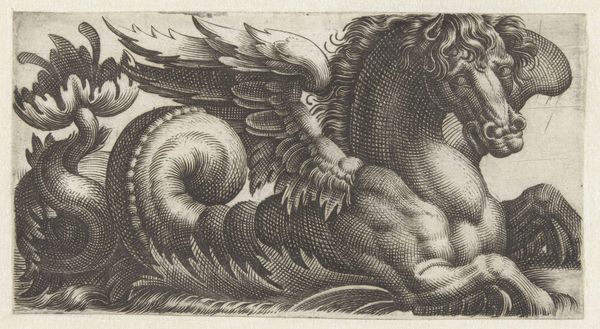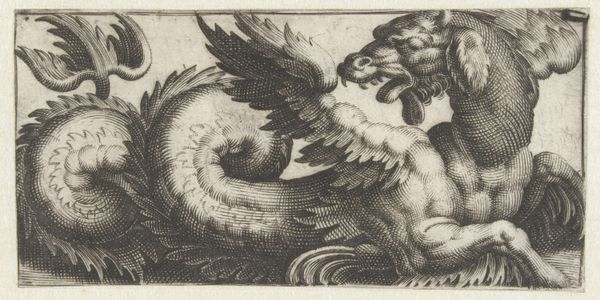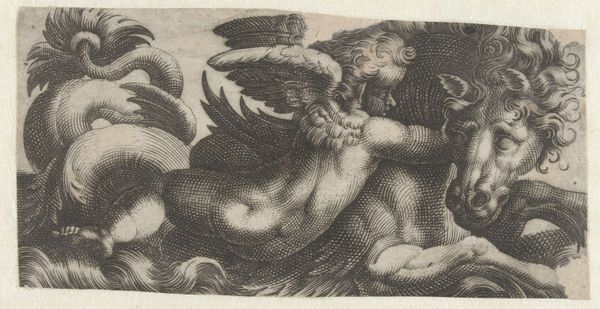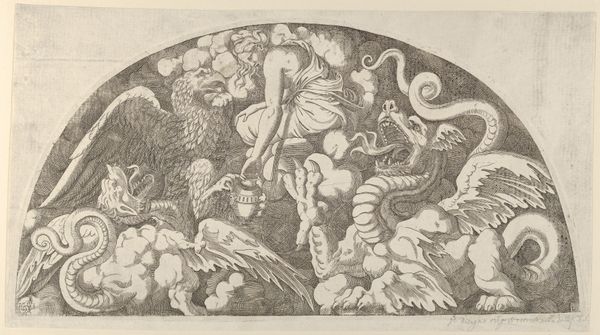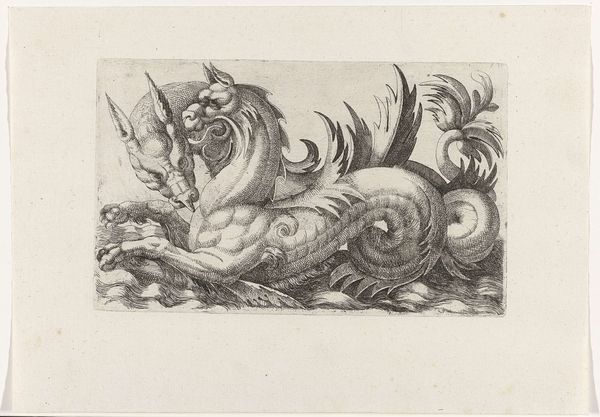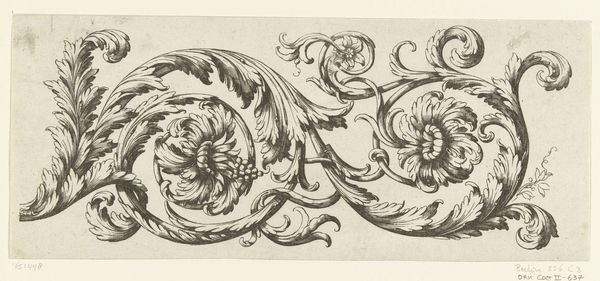
Gevleugelde zeehond met een soort zadel op zijn rug 1580 - 1610
0:00
0:00
giovanniandreamaglioli
Rijksmuseum
print, engraving
#
allegory
# print
#
caricature
#
fantasy-art
#
mannerism
#
figuration
#
form
#
engraving
Dimensions: height 51 mm, width 105 mm
Copyright: Rijks Museum: Open Domain
Editor: This engraving from between 1580 and 1610, titled "Winged Seal with a Sort of Saddle on its Back," attributed to Giovanni Andrea Maglioli, is…well, quite bizarre! It depicts a strange hybrid creature. What's most striking is the composite nature of the being. What exactly is going on here? Curator: Indeed. Notice how the engraver combined recognizable forms to create this fantastical creature. It has the head and forelegs of a lion, complete with a regal mane, merging into a scaly, serpentine body ending in a fishtail. And of course, wings! What symbols resonate for you here? Editor: Well, a lion often symbolizes courage and strength. The sea suggests vastness and mystery, even danger. Combining them seems…contradictory, almost? Curator: Precisely. Mannerist art often uses such juxtapositions. It’s a conscious playing with established iconography. The winged lion is itself a motif representing Saint Mark, but rendered as a sea creature with a saddle suggests a disruption of familiar narratives. Is it mocking or reverent? This ambiguity reflects a period of great intellectual and religious upheaval. Do you see the wave patterns? They appear to be both water and mountains. Editor: Now that you mention it, the ‘saddle’ looks less like something to ride on and more like… another set of smaller wings, maybe? Like the creature is transforming, caught between worlds? Curator: An excellent observation! Consider how the composite being might relate to transformation or liminal spaces. It speaks to the anxieties and fascinations with the natural world and its capability for adaptation or, from a certain perspective, devolution. We humans continue to construct our identity and memory through such transformations and composite signs, yes? Editor: Absolutely. I hadn’t thought about it that way initially, seeing the creature as simply strange, but now I recognize a visual representation of larger cultural concerns and even cultural identity itself. Curator: These fantastical figures served to externalize or perhaps question the values held dear during unstable periods of transformation; they became images imbued with cultural meaning.
Comments
No comments
Be the first to comment and join the conversation on the ultimate creative platform.
